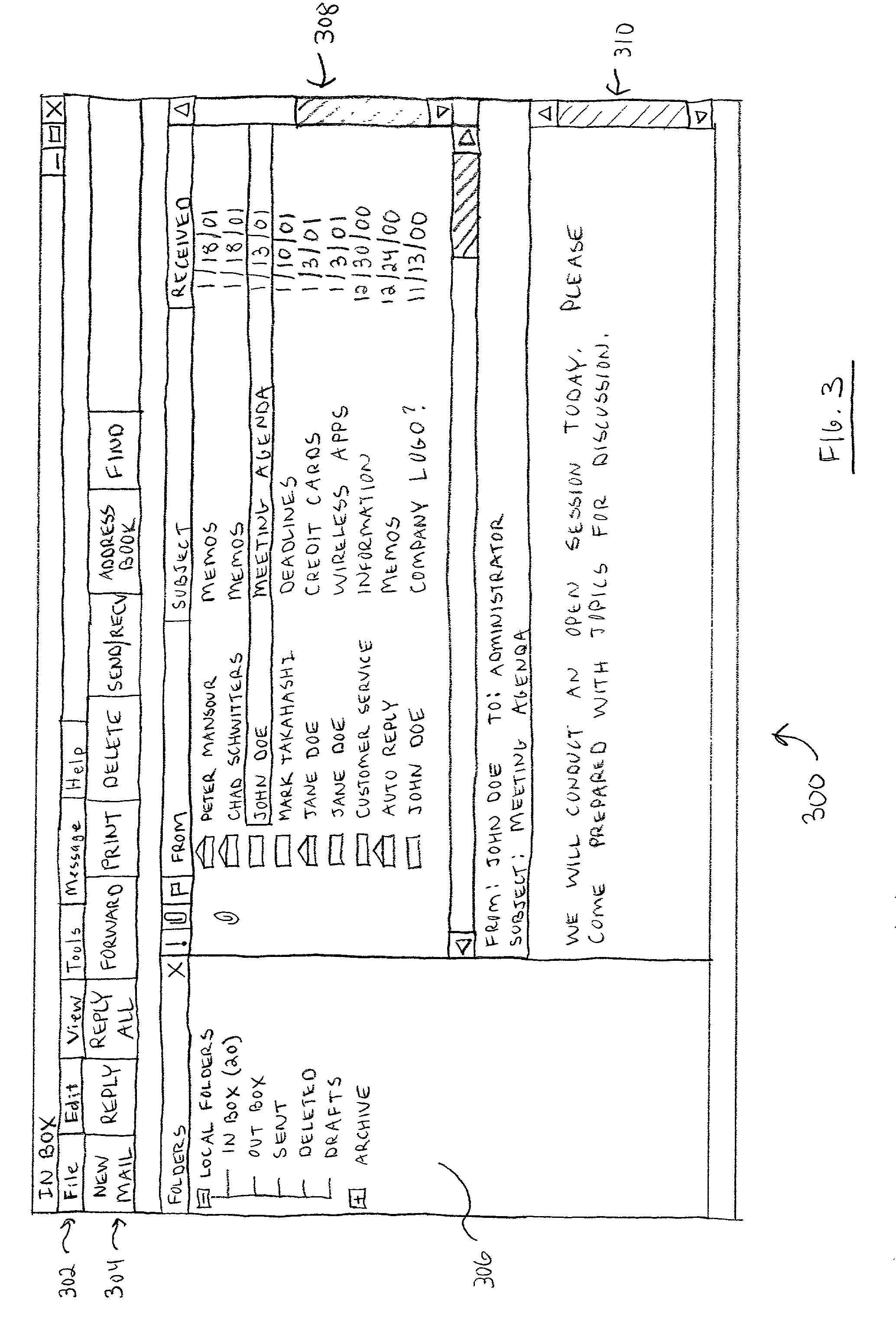Platform-independent distributed user interface client architecture
a client architecture and user interface technology, applied in the field of clientserver data communication system, can solve the problems of increasing the workload of the client device, affecting the performance of the client device, and the device losing the level of processing functionality it originally had, so as to reduce the workload of the client side resource, the effect of reducing the workload of the client sid
- Summary
- Abstract
- Description
- Claims
- Application Information
AI Technical Summary
Benefits of technology
Problems solved by technology
Method used
Image
Examples
example email
[0065] Example Email Application
[0066] For the sake of illustration, the techniques of the present invention are explained herein in the context of an existing desktop email application. Of course, the distributed UI system may (and preferably does) support any number of alternate and / or additional applications. FIG. 3 is an illustration of an example UI 300 associated with a desktop email application. Although not a requirement of the present invention, the UI 300 may utilize UI components, controls, icons, and features that are utilized by standard or commercially available applications. For example, UI 300 may be an example of Microsoft's Outlook, Microsoft's Outlook Express, Novell's GroupWise, or the like.
[0067] The overall appearance of UI 300 is preferably comprised of a number of individual UI control elements. As used herein, a "UI control" or a "control element" refers to a unit object of the UI that is provided by the client device OS (i.e., a native UI control) or some o...
PUM
 Login to View More
Login to View More Abstract
Description
Claims
Application Information
 Login to View More
Login to View More - R&D
- Intellectual Property
- Life Sciences
- Materials
- Tech Scout
- Unparalleled Data Quality
- Higher Quality Content
- 60% Fewer Hallucinations
Browse by: Latest US Patents, China's latest patents, Technical Efficacy Thesaurus, Application Domain, Technology Topic, Popular Technical Reports.
© 2025 PatSnap. All rights reserved.Legal|Privacy policy|Modern Slavery Act Transparency Statement|Sitemap|About US| Contact US: help@patsnap.com



